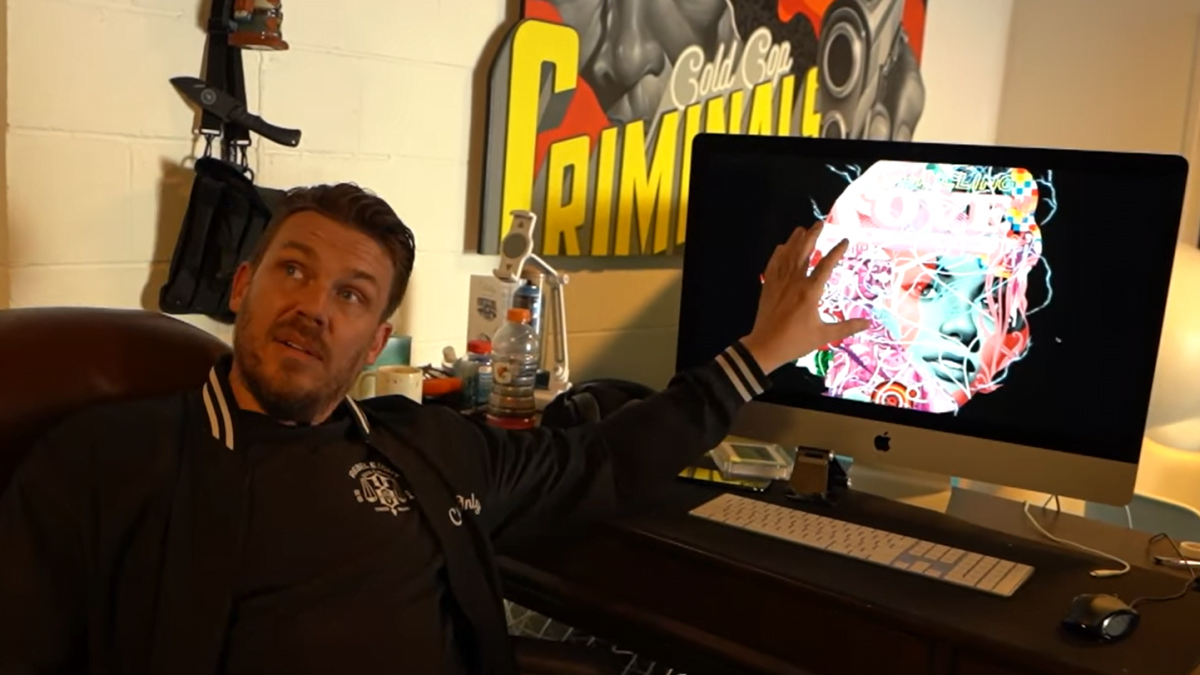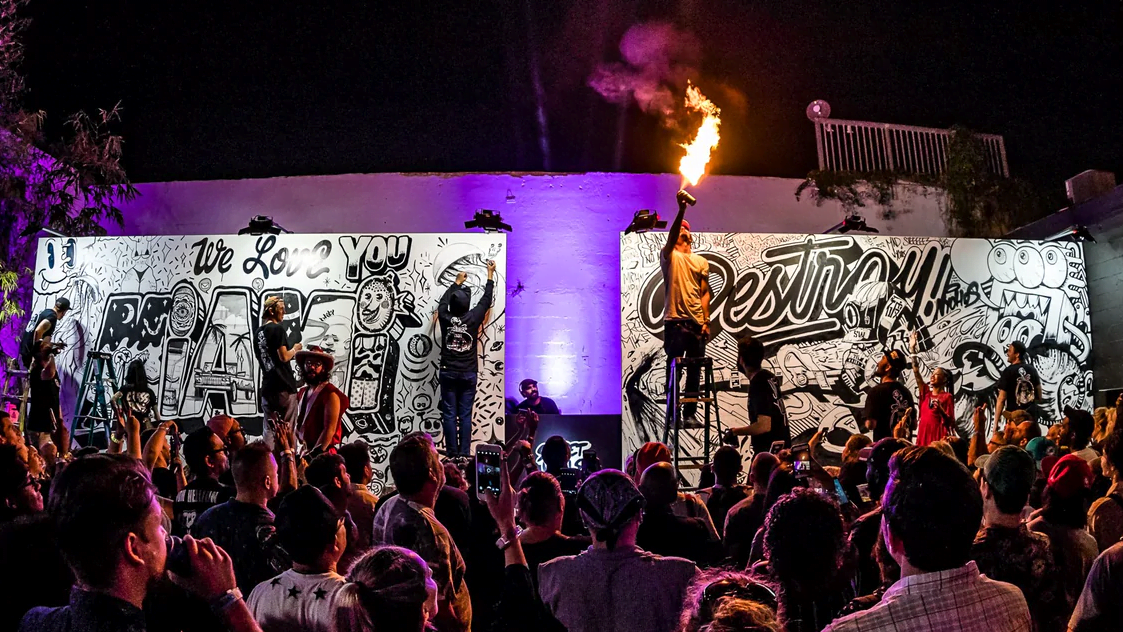How graffiti can embrace the blockchain
For more than half a century, graffiti has spread across urban areas’ walls, streets and billboards. Widespread throughout the world first as a method of storytelling and weeding, what once began as a criminalized pastime has grown into a global phenomenon of cultural expression.
Anecdotally, street art exists solely as public art. That is, street art and graffiti live in the physical realm and, like paintings and sculptures, are immovable and unchanging. But now, as with other forms of “permanent” works, street art is entering the blockchain.
NFTs exist primarily as digital experiences, which is why tokenized street art has the potential to provide a robust use case for transferring not just art, but culture itself to the blockchain. From individual success stories to niche platforms, entire ecosystems are being created around NFT street art.
Bring street art on a chain
Street art is an inherently physical discipline. After all, it’s in the name. To reiterate the most basic principles of both street art and graffiti: each of these art forms utilizes public spaces to create art for public display. So how then can the product of such a medium-specific discipline be transferred to the blockchain as NFTs?
It’s easier than you might think.
Several street/graffiti artists have already found success by digitizing their works in various ways. While some artists tackle the physical first—scanning, photographing, or videotaping their creations after they’re finished—others are already well versed in digital art tools, often using them in the planning stages of their physical works.
From Greg Mike to Matt Gondek, a number of artists have staked their claims in NFTs. But two artists, lushsux and Tristan Eaton, can perfectly exemplify the diversity of methods when it comes to bringing street art onto the chain.
On one side, lushsux works very out of the box. That means his creations live mainly in the physical realm, despite ultimately being most successful on the internet. He reuses memes, distorts pop culture icons and defaces NFT images in the form of murals – which he then photographs, animates (or somehow enhances) and stamps as NFTs.
On the other side, Tristan Eaton often does the opposite. While he’s obviously working in the physical realm of larger-than-life murals when it comes to NFT projects, Eaton has been known to design everything digitally, making it significantly easier to transfer his works to the blockchain. We saw this process unfold with his GEMMA (Generative Electronic Museum of Metaverse Art) collection.

So the technical challenges of bringing street art, and the concepts and spirit of street art into the blockchain are not really that complex. Still, when all is said and done, someone still has to hit the “mint” button. But more often than not, it’s not actually the artists who have to deal with the technical parts of making NFTs.
Where do street art NFTs live?
Regardless of an artist’s success in the traditional art world, it remains true that minting an NFT or an NFT collection can be a daunting task for newcomers. Although the tools and incentives are plentiful for physical artists looking to become a part of the NFT market, many start out clueless as to how to begin the process of symbolizing their work.
Of course, there’s always the option of going it alone and using online resources (like nft now’s guide for all things non-fungible). But as Terry Guy, founder of entertainment brand Secret Walls puts it, finding someone to help you into the NFT space can help reduce the learning curve.
“The ceiling with finding good people in [NFT] space is always a challenge. But it is a good journey; you just have to ask around and find these recommendations,” said Guy in an interview with nft now. And he’s definitely speaking from personal experience, as his company embarked on yet another Support Your Local Artist (SYLA) tour, this time with a blockchain-powered twist.
Aside from advocating for artists to partner with NFT platforms, as he did, to help them on their journey, Guy says he’s also happy to share his resources with artists who want to get involved in the NFT space. With decades of experience in both fostering community around street art and providing a stage for lesser-known artists to flourish, he remains an authority in the street art sector and is now working towards the goal of using street art to create a link between physical and digital NFT- experiences.
While Secret Walls is undoubtedly an old street art brand, Guy at Web3 aims to empower artists through physical means (via SYLA matches) in hopes of bringing them and their communities onto the blockchain. And his efforts to lower the barrier to entry for graffiti and street artists have been echoed by other digitally native organizations.

With the decentralized NFT platform Streetlab, entrepreneur Sébastien Rouby and his team approach artist empowerment from a top-down approach. Instead of building from the ground level towards the blockchain, Streetlab has already launched a platform that has a personalized approach to everything a street artist might need to succeed in the NFT world.
“We create a tailored approach for each artist we talk to. Some of them are really interested, but they need more help and more guidance, says Rouby to nft now. “We always say we will not demand anything or tell them what to do. We just want to create this breeding ground [of creativity].”
Through Streetlab, street artists can learn about NFTs, receive coaching on how to bring their specific art styles into the blockchain, and get their collections stamped in one of the only marketplaces that targets graffiti and street art NFTs directly. The platform is truly a burgeoning mecca for this niche and developing sector of the NFT ecosystem.
How can NFTs benefit street performers?
In the last decade alone, the perception of graffiti and street art has undergone a profound evolution. Initially a niche subculture, graffiti has since been gentrified in its cities of origin. Now street and graffiti artists have more opportunities to grow and achieve commercial success. But, as with music, photography or any other creative discipline, not everyone gets the chance to make a living from their art.
This is one of the main reasons why the NFT ecosystem has become a hotbed for creators. Many can sustain themselves by selling NFTs, prompting artists of all backgrounds to join the NFT community in hopes of gaining a foothold in the market. In other words, street artists are just the latest stars to have been to the party.
On the importance of including street artists on the blockchain, Rouby says it is necessary to recognize that street art is underrepresented in the NFT space. “We really believe that street art has a lot in common with blockchain philosophy,” said Rouby. “And we think that there are such militant aspects in the blockchain fight for decentralization, and with street art and the fight for the ability to make art, sometimes illegally, and to display militant messages on walls.”
However, Guy believes that bringing street artists into the NFT space is about giving them the means to profit from their work. “The artists that we try to work with, the kind of newcomers, are always trying to hustle to make a living. And I feel that NFTs have offered as a solid platform or opportunity for them to use their imagination and add that extra income to everything else that they’re doing,” Guy said.
Perhaps each of these perspectives provides some insight into how and why street artists can benefit from the NFT space. The monetary aspect is obviously attractive, especially for artists who have found it difficult or even impossible to make a profit from their work. But the idea that graffiti and blockchain culture share the same ideologies may be the true incentive for street artists to join the ecosystem.
Holistically, the decentralized, renegade mentalities of the blockchain community also feel like the spirit of street art. The desire to do things differently and chart new paths through the creative industry is central to both cultures. While street art can foster a sense of radicalized community in real life, the same has happened online in the Web3 space.
Although the intersection between street art and NFTs is still relatively fresh, similarities between the cultural creators on both sides could very well create a shared and collaborative metaverse where the physical and digital meet. If other forms of art can be distributed on such a large scale on the blockchain, why should street art be any different?


